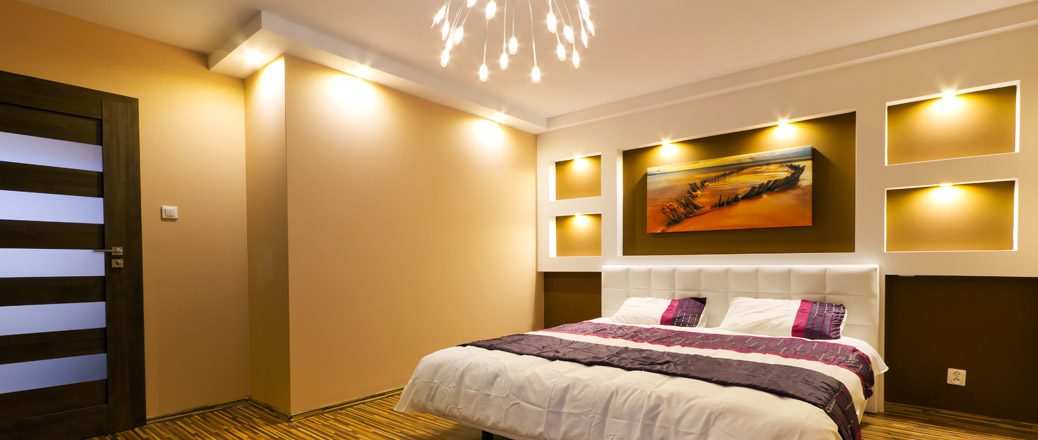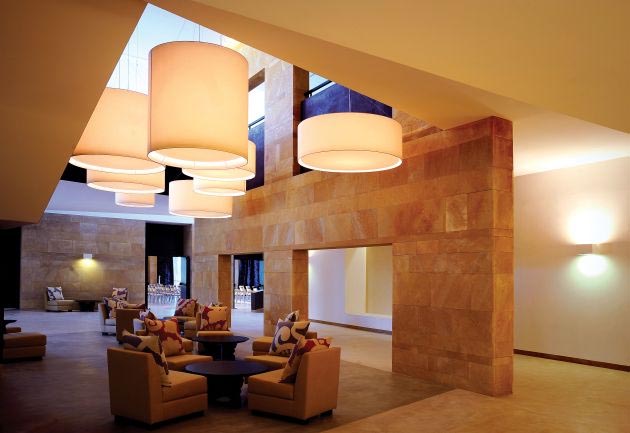Some would argue that as interior decorating and home styling is a very personal subject, there is technically no such thing as getting it wrong. Just as long as you are happy with the result and it is one that serves you well, who’s to say what’s right and wrong when it comes to interior styling?
Now, to follow the above of thinking is all well and good, but interior designers and lighting experts are called upon so frequently to offer important advice when and where homeowners have made pretty big mistakes. And while most will happily admit when they dropped a clanger with a wall covering, very few are aware of the mistakes they may have made in terms of lighting.

So from the experts at The Light Yard, what follows is a quick introduction to seven surprisingly common mistakes homeowners make when installing or revamping their interior lighting systems:
1 – Too Much Recessed Lighting
First of all, perhaps the single most commonly experienced problem by professionals called in to help out is of recessed down lighting being used for the place with no thought. There may be a great many areas around the home where this kind of lighting works a treat, but when and where it has been used everywhere with no real thought, the resulting effect isn’t always desirable. It’s perfectly possible to have plenty of recessed down lighting in place yet to still feel as if you are sitting in a cave as there is no lighting whatsoever hitting the walls.
2 – No Task Lights For the Kitchen
It’s really could not be easier or more affordable these days to ensure that the kitchen is fitted with as many task lights as necessary to make working in the kitchen as easy and pleasant as possible. Of course, the good news about this mistake in particular is the way in which it can be very easily remedied. From battery powered LED task lights to mains-connected xenon bulbs and so many more options besides, task lights can make the kitchen a more functional and enjoyable place in general.
3 – No Added Side Lights Around the Vanity
If you currently have a vanity which you use or plan to use for applying makeup, shaving or any other such tasks, it is important to ensure that there are side lights as well as the usual downlights. The problem in this instance is that if you only have downlights above your vanity, this one-directional light has a nasty habit of casting unattractive shadows all down the face. As such, the reflection you see in the mirror is not entirely realistic and flattering, therefore makes the job that bit harder.
4 – Overly Bright Bulbs with No Dimmers
Another relatively common mistake is that of using halogen or incandescent bulbs of a particularly high voltage or strength without any kinds of dimming controls. Perhaps above and beyond all other interior lighting tips, the easiest to implement is the installation of dimmers. Even if you are still using all the incandescent bulbs for example, the use of dimmer switches not only creates a more pleasant lighting effects, but reduces the amount of energy needed to light them and extend the life of the bulb.
5 – Overlooking Decorative Lighting Entirely
A quick point but an important point nonetheless, never forget that lighting does not only exist to serve a purpose. Above and beyond simply adding the necessary light to your rooms, the right lighting fixtures and fittings have the potential to transform your interior living spaces into anything you want them to be.
6 – Insufficient Lighting Control
If you are using multiple forms of lighting in your home, it is a good idea to ensure that each type of light has its own separate control system. If for example you are using LEDs and incandescent bulbs, you should ensure the control separately rather than from the same dimmer or switch. You can of course do this the standard way which is to use as many light switches as necessary, or you could also go for a centralisedcomputerised wall-mounted switch system.
7 – Favouring Form Over Function
Last but not least, while it is important to ensure that the lighting you choose for your home looks attractive enough, it is never a good idea to favour form over function. You may have found a bunch of old antique lamps that look the part, but if they are categorically unable to light the rooms of your home to the required extent, you should see them all as additional decorative garnishes rather than primary lighting sources.
